Material removal with a collaborative robot is a process that leverages the combination of advanced technologies and interaction between humans and machines to perform the elimination or modification of material from an object or surface. There are 5 main characteristics of a collaborative robot for material removal:
“Safety“: Collaborative robots are designed to operate safely in the presence of humans. They are equipped with advanced sensors that detect the presence of people or obstacles in their environment and can automatically reduce speed or stop completely to avoid collisions or accidents.
“Intuitive Programming“: Collaborative robots are designed to be easy to program and use, even for non-experts. Programming is often done through an intuitive graphical interface that allows operators to define robot movements and removal parameters with just a few clicks.
“Touch Sensitivity“: Collaborative robots are equipped with tactile sensors that allow them to sense contact with the object or surface to be removed.
“Precision and Repeatability“: Collaborative robots can perform precise and repeatable movements, ensuring accurate and uniform material removal. Their high precision allows for high-quality results, especially in product assembly.
“Flexibility“: Collaborative robots are designed to adapt to various material removal applications. They can be equipped with specific tools or equipment for the processing process, enabling a wide range of operations.
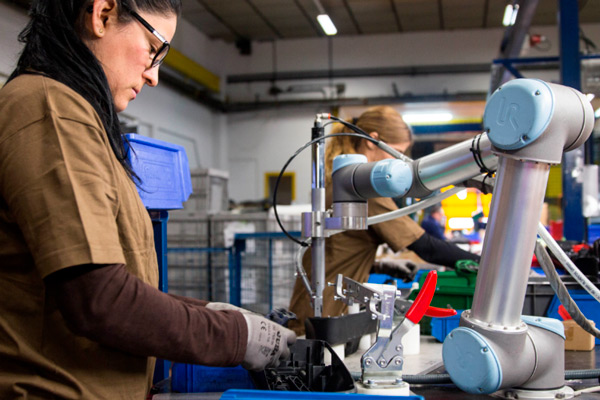
Assembly with a collaborative robot, also known as a cobot, is an advanced solution that combines the efficiency and precision of robots with the flexibility and safety of human-machine interaction.
Here are some key features of assembly with a collaborative robot:
“Advanced Safety“: Cobots are equipped with advanced sensors that allow them to detect human presence and react appropriately. They can slow down or stop automatically if they detect an imminent collision with a human operator.
“Flexibility“: Cobots are designed to easily adapt to various assembly tasks. They can be programmed to perform a wide range of different tasks without the need for complex configuration.
“Precision and Repeatability“: Cobots can perform assembly tasks with extremely high precision and consistent repeatability. This ensures high-quality assembly.
“Adjustable Speed“: Cobots can work at different speeds, allowing them to adapt to specific production requirements. They can be programmed to work at higher speeds to increase productivity or at lower speeds for tasks that require greater precision.
“Monitoring and Data Analysis“: Cobots can be equipped with integrated monitoring and data analysis systems. This allows for collecting information on the performance and efficiency of the assembly process, continually referring to areas that can be further improved.
“Workload Reduction“: The use of a cobot in assembly can reduce the physical workload on human operators.

Add value to your business with the collaborative robotic arm that offers the fastest return on investment in the industry.
Thanks to the versatile and flexible use of collaborative robots, you can quickly adapt production lines to new products. Conkreta Robotics, located in Molinella in the province of Bologna, provides companies of all sizes and sectors with a collaborative robotics platform designed for the future. If the workflow changes, the robot can be easily and quickly redeployed due to its compact size, lightweight design, and ease of programming.
Servicing a machine, whether it’s a press, lathe, or milling machine, means automating the most repetitive and lower-value parts of the process. For example, loading and unloading the component to be worked on and removing it when the cycle is complete. Or inserting printing dies into a press and removing molds and printed parts once the process is complete. Conkreta Robotics can automate 100% of the process, from opening the machine doors to quality control on the finished piece, if the processing cycle time is long enough to allow it.
The ease of programming, the movement on six axes, and the safety features allow increasing the efficiency of a machine (milling machine, lathe, or press) already owned by the company, increasing its production capacity.
The cobots offered by Conkreta Robotics in Molinella, province of Bologna, are suitable for automating various types of machine tending, thanks to their pronounced flexibility. They can enter production alongside presses, lathes, injection molding machines, sheet metal bending machines, and presses. By integrating a different end effector at the wrist, it is possible to start different applications in a very short time and move the cobot wherever it is necessary to automate the process. In essence, a cobot can be moved from a temporarily idle CNC machine and relocated to another one in operation, minimizing machine downtime and process interruptions.
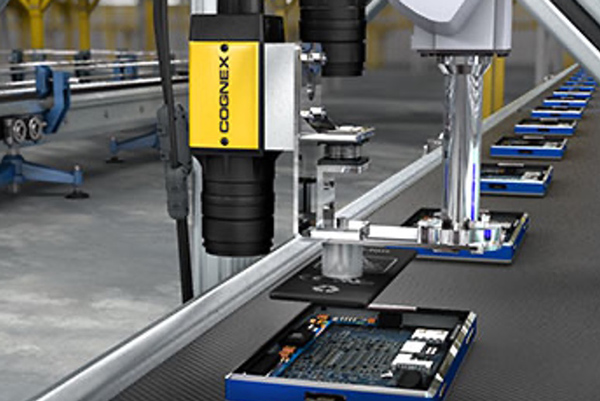
Quality control with a collaborative robot from the “Cognex” brand offers a set of features that enhance efficiency and accuracy.
Here are some of the key features of a quality control system with a “Cognex” collaborative robot:
Advanced Artificial Vision: The collaborative robot “Cognex” employs state-of-the-art artificial vision technologies to detect and analyze details and defects on products. This enables a precise and reliable assessment of quality.
Easy Integration: The “Cognex” robot can be easily integrated into various production lines without requiring significant modifications to the existing infrastructure. This feature saves time and money during processing.
Intuitive Programming: The “Cognex” quality control system offers an intuitive user interface that simplifies robot programming. Operators can easily define control specifications.
Precision and Speed: The collaborative robot “Cognex” performs high-speed quality controls without compromising accuracy. Thanks to its ability to quickly process vision data, the robot can conduct precise inspections in short timeframes.
Adaptability: The “Cognex” quality control system can be easily adapted to address a wide range of products and applications. It can be programmed to recognize and assess various specific features, such as size.
Real-time Feedback: The collaborative robot “Cognex” provides real-time feedback on inspections performed. Operators can monitor inspection results and promptly take necessary corrective measures.

The collaborative robot is designed to interact safely with humans. The use of advanced collision detection systems and force measurement capabilities allows the robot to dynamically adapt to human presence, ensuring a safe working environment.
Flexible Automation: Thanks to its programmability and the ability to use advanced sensors, the collaborative robot can adapt to a variety of assembly tasks. It can be easily reprogrammed to handle different activities without the need for complex configuration.
Integration with Personnel: Cobots are designed to work closely with human operators. They can be employed in direct collaboration with staff, performing tasks that require precision and repeatability while operators focus on more complex and high-value-added activities.
Increased Efficiency: The use of collaborative robots in assembly environments allows an overall increase in process efficiency. Cobots can operate without interruptions, reduce cycle time, and improve consistency in assembly activities, contributing to optimizing overall production.
Ease of Programming: Collaborative robots are designed with an intuitive user interface and simplified programming tools. This allows operators to quickly learn how to program and control cobots, reducing the time required to implement new assembly processes.
Versatility in Applications: Thanks to their flexibility and adaptability, collaborative robots can be employed in a variety of assembly applications. They can handle tasks such as picking and placing, component assembly, material handling, and more, offering a versatile solution for different industrial sectors
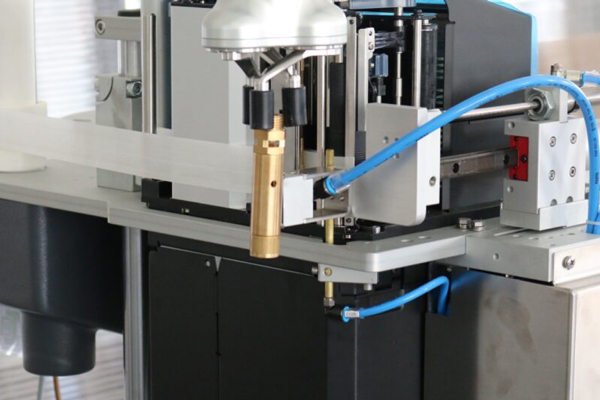
Automatic labeling with a collaborative robot is an innovative process that combines label automation with the versatility and human interaction of a collaborative robot. This solution offers a series of unique features that improve the efficiency and accuracy of the labeling process.
Here is an overview of the main characteristics of automatic labeling with a collaborative robot:
“Precision Automation”: The collaborative robot is programmed to apply labels accurately and consistently to various products or packages. Using advanced sensors and intelligent algorithms, the robot recognizes and positions labels consistently and safely.
“Flexibility”: The robot can adapt to different sizes, shapes, and types of labels without requiring significant reconfiguration. This allows for greater flexibility in production and the rapid introduction of new products to the market.
“Safe Collaboration”: Collaborative robots are designed to work safely alongside human operators. They are equipped with advanced sensors that detect human presence and immediately reduce speed or stop completely to avoid collisions or injuries.
“Integration with Existing Systems”: Collaborative robots can be integrated with existing production systems, including labeling and data management systems. This enables bidirectional information exchange and centralized management of labeling operations.
“Quick Reprogramming”: The collaborative robot can be easily reprogrammed to adapt to new labeling requirements or product changes. With an intuitive and simple interface, operators can instruct the robot to modify label positions, dimensions, or other parameters without requiring specialized technical skills.
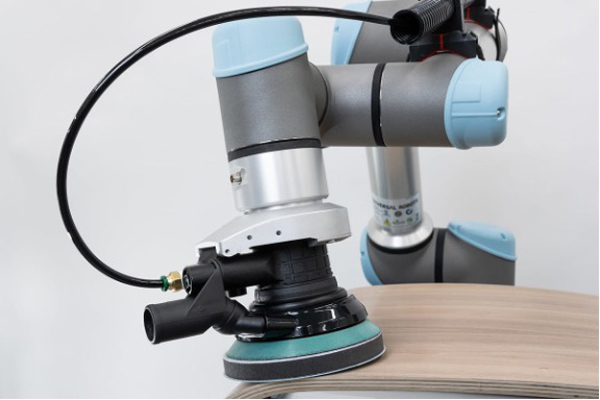
A surface finishing with a collaborative robot offers a range of features that make it efficient, precise, and highly versatile.
Here is a list of some key characteristics of this technology:
“Programmability”: Collaborative robots are easily programmable to perform a wide range of surface finishing tasks. They can be configured to adapt to various shapes and sizes of the pieces being worked on.
“Safety”: Collaborative robots are designed to interact safely with humans. They are equipped with sophisticated obstacle detection and force control systems, allowing them to work in close proximity to operators without posing a risk.
“Speed and Productivity”: Thanks to their execution speed and the ability to work without interruptions, collaborative robots can complete the surface finishing process in shorter times compared to traditional methods. In fact, through this system, production increases, and assembled products are of high quality.
“Repeatability”: Collaborative robots can precisely repeat the same movements and sequence of actions, ensuring consistent and reproducible results.
“Error Reduction”: Due to their automated nature and the ability to perform repetitive tasks without fatigue or human errors, collaborative robots help reduce errors in the surface finishing process, thus improving the final product.
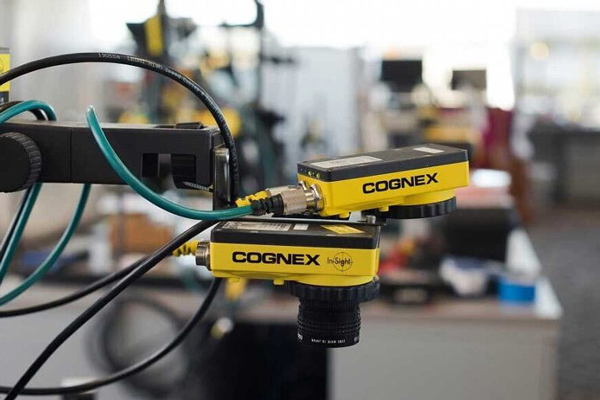
Photography is a key element for visual data collection and object analysis in the industrial sector. Thanks to advances in robotic technology, companies like Cognex have developed collaborative robots that integrate advanced photography capabilities.
In this text, we will explore the main features of photography and the classification offered by the collaborative robot brand “Cognex.”
“Image Quality”: The Cognex collaborative robot is equipped with a high-resolution camera system that captures high-quality images. Its ability to capture precise details allows for better visualization of objects and relevant features.
“Lighting”: The Cognex robot is equipped with a variety of lighting options, including LEDs and flashes, to adapt to different working environments. Proper lighting ensures accurate color rendering and minimizes unwanted shadows.
“Focus”: The collaborative robot Cognex can automatically adjust the focus to obtain sharp and well-defined images. Automatic focusing reduces the need for human intervention and ensures consistent image quality.
“Exposure Control”: The Cognex robot offers precise exposure control to ensure that images are properly illuminated. This allows for the detection of objects with reflective or particularly dark surfaces.
“Acquisition Speed”: The Cognex robot can capture images at high speed, enabling a rapid process of photography and analysis.
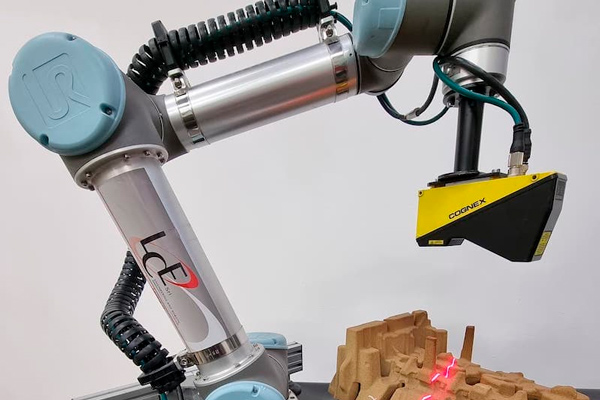
Handling with a collaborative robot, or cobot, is an innovative solution in the field of industrial automation. Unlike traditional industrial robots, cobots are designed to interact safely and collaboratively with humans in the same work environment.
Here are some of the main features of handling with a collaborative robot:
“Intuitive Programming”: Cobots can be easily programmed even by non-specialized personnel. Intuitive user interfaces, such as touch-screen panels or drag-and-drop interfaces, allow teaching the robot the desired movements by simply manually guiding it through different phases of the task.
“Flexibility”: Cobots are designed to be highly flexible and adaptable to various applications. They can be easily reorganized or reconfigured to perform different tasks, allowing companies to improve efficiency and productivity without making significant changes to the work environment.
“Partial Automation”: Cobots can perform a range of repetitive or hazardous tasks, allowing human operators to focus on more creative or higher-value-added activities. This partial automation can contribute to improving the quality of work and reducing employee fatigue.
“Compact Size”: Cobots are often designed with compact dimensions and a wide range of mounting options. They can be easily integrated into existing work environments without requiring major modifications or investments in additional infrastructure.
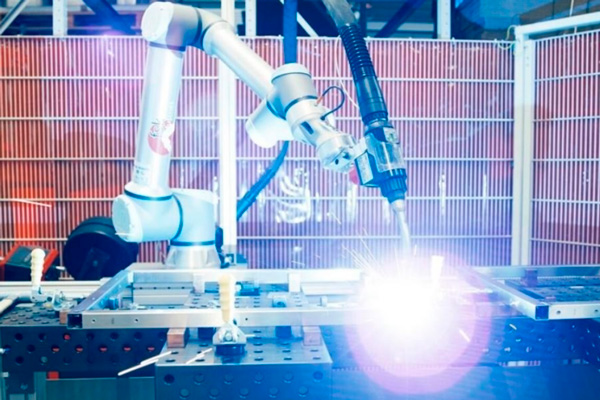
Welding with a collaborative robot, also known as a cobot, is a process in which the robot is designed to work alongside human operators in a safe and collaborative manner. This technology offers numerous advantages compared to traditional welding performed solely by human operators or traditional industrial robots.
Here are some key features of welding with a collaborative robot:
“Precision”: Collaborative robots can perform highly precise and repeatable welds. Thanks to the use of sensors and vision systems, they can detect and correct any deviations from the programmed welding trajectory, ensuring consistent quality.
“Increased Productivity”: The use of cobots in welding can significantly increase the overall process productivity. Collaborative robots can work without interruptions, 24 hours a day, 7 days a week, and can perform welding operations more quickly than human operators.
“Cost Reduction”: Automating welding with cobots can lead to a significant reduction in costs. Since collaborative robots can perform the work faster and with fewer errors than human operators, waste and the need for repairs or touch-ups are reduced, thereby lowering production costs.
“Improvement of Working Conditions”: Thanks to the collaboration between human operators and robots, working conditions are significantly improved. Human operators can focus on supervisory tasks, quality control, and high-value-added tasks.
via Antonio Gramsci 15 40062,
Molinella, Bologna (IT)
info@conkretarobotics.com
+39 344 3403427
© conkretarobotiks.com 2024 – tutti i diritti riservati
